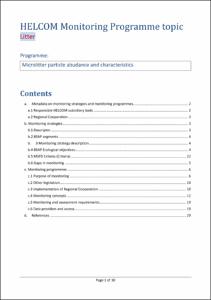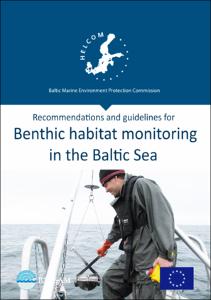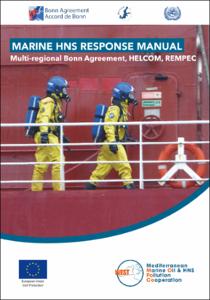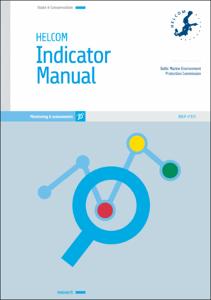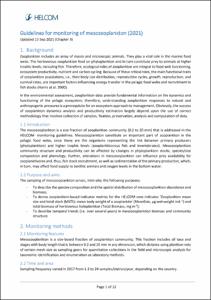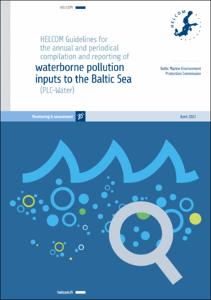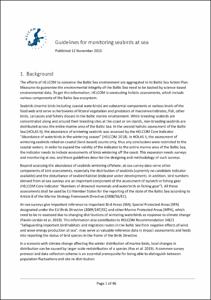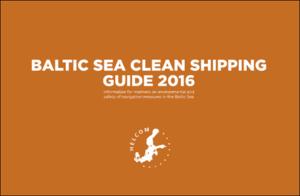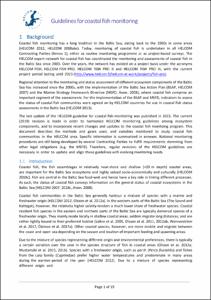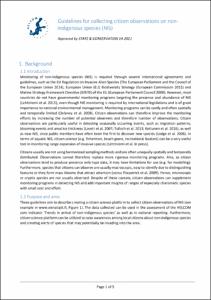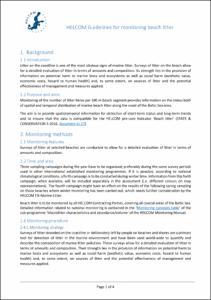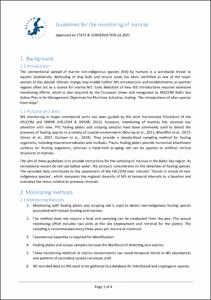⇒ HELCOM: Baltic Marine Environment Protection Commission
Browse by
The Baltic Marine Environment Protection Commission – also known as the Helsinki Commission (HELCOM) – is an intergovernmental organisation (IGO) and a regional sea convention in the Baltic Sea area. A regional platform for environmental policy making, HELCOM was established in 1974 to protect the marine environment of the Baltic Sea from all sources of pollution.
https://helcom.fi//
Collections in this community
Recent Submissions
-
Guidelines for monitoring of phytoplankton species composition, abundance and biomass.
(HELCOM, Helsinki, Finland, 2023)Phytoplankton primary producers constitute the basis of the pelagic food web and phytoplankton community composition directly affects the nutrition, growth, reproduction and survival of different organisms (see Hällfors ... -
HELCOM Monitoring Programme topic Litter. Programme: Microlitter particle abundance and characteristics.
(HELCOM, Helsinki, Finland, 2020)A common monitoring strategy is missing because monitoring methods are under development, and a common approach needs to be agreed upon. Monitoring should enable the identification of artificial polymer particles from ... -
HELCOM Monitoring Programme topic Litter. Programme: Litter on the seafloor.
(HELCOM, Helsinki, Finland, 2020)There is wide experience and data collected on litter in the seafloor and fishing gear/lost fishing nets in the HELCOM area. Seafloor litter collection is integrated to bottom trawling for fish stocks assessment, so therefore ... -
HELCOM Monitoring Programme topic Litter. Programme: Litter in biota.
(HELCOM, Helsinki, Finland, 2020)Surveys on litter in biota are conducted to allow for an assessment of litter in biota in terms of amounts and composition of ingested plastic and numbers/frequencies of animals adversely affected due to litter, such ... -
HELCOM Monitoring Programme Litter. Programme: Macrolitter characteristics and abundance-volume-floating litter.
(HELCOM, Helsinki, Finland, 2020)Monitoring is to be carried out to fulfill assessment requirements of HELCOM ecological objectives that are specified through HELCOM core indicators. The requirements on monitoring can include number of stations, the ... -
HELCOM Monitoring Programme topic Litter. Programme: Macrolitter characteristics and abundance/volume – Beach litter.
(HELCOM, Helsinki, Finland, 2020)The monitoring of beach litter started for most HELCOM countries in 2012, and has continued regularly since then. However, the countries have until now used different monitoring protocols for identifying and reporting beach ... -
BALSAM Project 2013‐2015: Recommendations and Guidelines for Benthic Habitat Monitoring with Method Descriptions for Two Methods for Monitoring of Biotope and Habitat Extent.
(HELCOM, Helsinki, Finland, 2015)Work package 6 of the BALSAM Project dealt with Baltic benthic habitat monitoring methods and programmes useful for the Marine Strategy Framework Directive (MSFD). This included both as-sessing the usefulness of monitoring ... -
Manual for Marine Monitoring in the COMBINE Programme of HELCOM.
(HELCOM, Helsinki, Finland, 2017)Monitoring is since long a well-established function of the Helsinki Convention. Monitoring of physical, chemical and biological variables of the open sea started in 1979, monitoring of radioactive substances in the Baltic ... -
Marine HNS Response Manual: Multi-regional Bonn Agreement, HELCOM, REMPEC.
(Project WestMopoco, 2021)Maritime transport is often described as “the backbone of globalized trade and the manufacturing supply chain”, since more than 80% of the global merchandise trade by volume is carried by sea. Some of the goods ... -
HELCOM Indicator Manual. Version 2020-1.
(HELCOM, Helsinki, Finland, 2020)The HELCOM indicators are a critical component of the Baltic Sea Action Plan (BSAP) and its approach to the assessment of good ecological/environmental status (referred to as ‘good status’ from here on) in the marine ... -
Guidelines for monitoring of mesozooplankton.
(HELCOM, Helsinki, Finland, 2021)The mesozooplankton is a size fraction of zooplankton community (0.2 to 20 mm) that is addressed in the HELCOM- monitoring guidelines. Mesozooplankton constitute an important part of zooplankton in the pelagic food webs, ... -
HELCOM Guidelines for the annual and periodical compilation and reporting of waterborne pollution inputs to the Baltic Sea (PLC-Water)
(HELCOM, Helsinki, Finland, 2022)Since the establishment of the Convention for the Protection of the Marine Environment of the Baltic Sea Area (Helsinki Convention) in 1974, the Commission for the Protection of the Marine Environment of the Baltic Sea ... -
Guidelines for monitoring seabirds at sea.
(HELCOM, Helsinki, Finland, 2021)The efforts of HELCOM to conserve the Baltic Sea environment are aggregated in its Baltic Sea Action Plan. Measures to guarantee the environmental integrity of the Baltic Sea need to be backed by science-based environmental ... -
Baltic Sea Clean Shipping Guide 2016 : Information for mariners on environmental and safety of navigation measures in the Baltic Sea.
(HELCOM, Helsinki, Finland, 2016)This information publication aims to give you a general overview of the regional environmental and safety of navigation measures applied in the Baltic Sea to maritime traffic. The focus is on commercial shipping which ... -
Guidelines for coastal fish monitoring.
(HELCOM, Helsinki, Finland, 2019)Coastal fish communities are influenced by a plethora of impacting variables, including human-induced pressures related to overexploitation, climate change, eutrophication, contaminants, habitat degradation, effects of ... -
HELCOM Guidelines for Management of Dredged Material at Sea and HELCOM Reporting Format for Management of Dredged Material at Sea . Adopted by HELCOM 36-2015 on 4 March 2015 and amended by HELCOM 41-2020 on 4 March 2020.
(HELCOM, Helsinki, Finland, 2016)Scope: 2.1 The guidelines are designed to assist Contracting Parties in the management of dredged material in ways that will prevent and eliminate pollution in accordance with Article 3 to the 1992 Helsinki Convention, ... -
HELCOM Manual on Co-operation in Response to Marine Pollution: within the framework of the Helsinki Convention.
(HELCOM, Helsinki, Finland, 2021)According to the Helsinki Convention the Contracting Parties shall agree bi- or multilaterally on those regions of the Baltic Sea, in which they act together. This is to maintain ability to respond to spillages of oil and ... -
Guidelines for collecting citizen observations on non-indigenous species (NIS).
(HELCOM, Helsinki, Finland, 2021)Monitoring of non-indigenous species (NIS) is required through several international agreements and guidelines, such as the EU Regulation on Invasive Alien Species (The European Parliament and the Council of the European ... -
HELCOM Guidelines for monitoring beach litter.
(HELCOM, Helsinki, Finland, 2021)Litter on the coastline is one of the most obvious signs of marine litter. Surveys of litter on the beach allow for a detailed evaluation of litter in terms of amounts and composition. Its strength lies in the provision ... -
Guidelines for the monitoring of marinas.
(HELCOM, Helsinki, Finland, 2021)NIS monitoring in major commercial ports has been guided by the Joint Harmonized Procedure of the HELCOM and OSPAR (HELCOM & OSPAR, 2013). However, monitoring of marinas has received less attention until now. PVC fouling ...
 Repository of community practices in Ocean Research, Applications and Data/Information Management
Repository of community practices in Ocean Research, Applications and Data/Information Management

